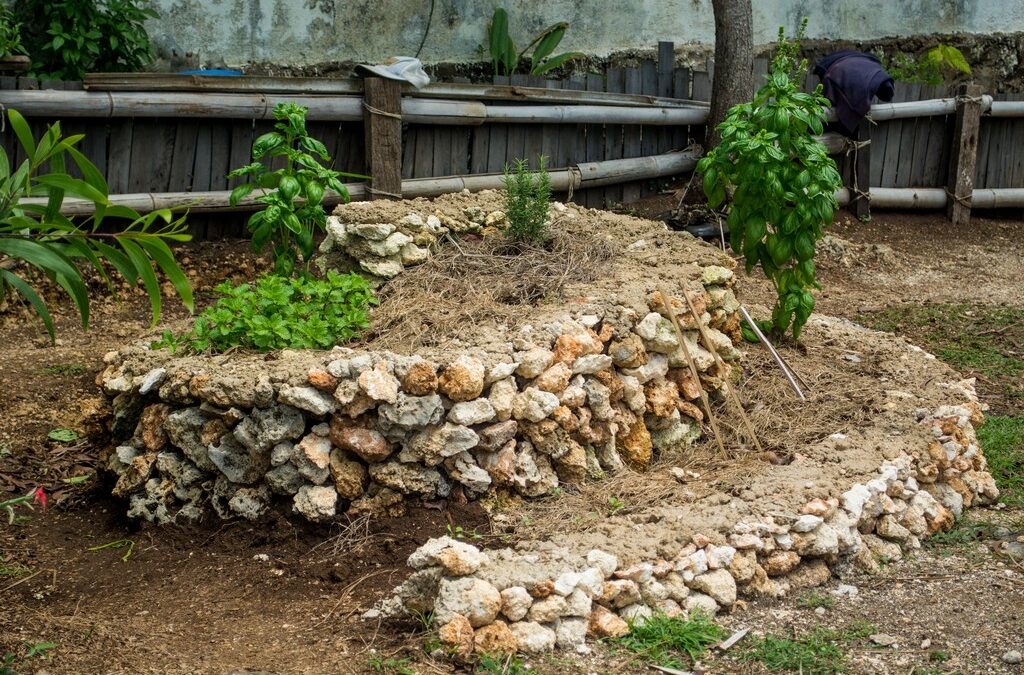The permaculture garden of R.O.L.E. Foundation has been thriving so well! Despite the monkeys and cows that sometimes come to enjoy our crops, we keep on building more garden beds with different sizes and types. One of the newest additions in our garden is an herbs spiral.
What is an herb spiral?
An herb spiral is a way of growing a wide range of herbs, each of which enjoys different moisture and light levels, in a relatively small area. It can be a great solution for small gardens as it increases the growing area. It also looks attractive and mimics one of the patterns commonly found in nature, the snail shell.

Why spiral?
The spiral design has a specific purpose. While it is the most certainly a beautiful shape to find in the garden, it also has practical reasons. Lots of microclimates are created by having the spiral raised in the center, spiraling down to ground level. Some spots of the spiral will get more sunlight, others more shade. Some areas will hold moisture better while the more raised parts offer the chance for better drained, drier soil.
How to build one?
First, decide where it should be located. Herb spirals are usually best situated in full or partial sunshine in a sheltered spot that is protected to some degree from the prevailing winds. Locate the herbs spiral close to the kitchen as herbs are most commonly used in the kitchen.
Another consideration is that the smell of the herbs can be used to effectively reduce pest problems on other garden beds and borders. The herb spiral should be placed, if possible, close to other growing areas, so they will benefit from the protective properties of the aromatic herbs.
Once you have decided on a location for your herb spiral, the next step is to create the structure. Build the spiral from the base up using stones and rocks, logs, reclaimed bricks, even glass bottles, or other recycled items from your home fixed in clay or cement. You can then fill in the spiral using dry leaves, soil, and compost. In our garden, we have used limestone rocks for the structure as we have a lot of it here.
The next step is to suit the herbs planting according to their needs. Because of the shape, you can choose where to plant which according to their needs for sun and water.

What’s next?
Currently, our herbs spiral is planted with rosemary, sweet basil, mint, and sage. Once the coriander, parsley, and celery seedlings are big enough, we will also plant them in the spiral. An herb spiral is a functional yet beautiful way to implement permaculture at home. Now it is your turn to build yours at home!


Recent Comments